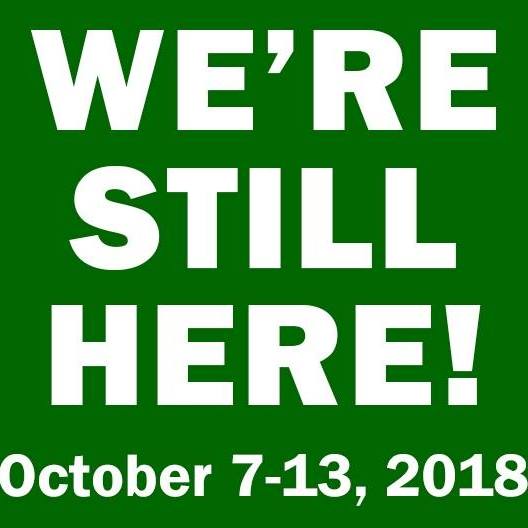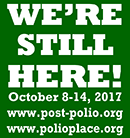 PHI’s 12th annual awareness campaign runs from October 7-13, 2018. This year, we invited polio survivors to tell us why "They’re Still Here!" by writing an essay explaining what resources, people or experiences in their life have allowed them to thrive.
PHI’s 12th annual awareness campaign runs from October 7-13, 2018. This year, we invited polio survivors to tell us why "They’re Still Here!" by writing an essay explaining what resources, people or experiences in their life have allowed them to thrive.
Read More…
Aging with Dignity!

Aging is inevitable and well-earned. Aging with the late effects of polio is perplexing and challenges our inner resources. Aging grants wisdom and time for reminiscing.
What photo represents your acquired wisdom? What photo would best represent your approach to aging?
Read More…
Post-Polio Health, Volume 27, Number 3, Summer 2011
Ask Dr. Maynard
Frederick M. Maynard, MD
Question: I have a severe rotator cuff tear and an orthopedic surgeon has recommended a shoulder replacement because of the severity of the tear and the presence of significant arthritis. I had polio in my right leg and use my left leg to lift/stabilize myself on crutches.
Read More…
Post-Polio Health, Volume 25, Number 4, Fall 2009.
Dr. Rhoda Olkin is a Distinguished Professor of Clinical Psychology at the California School of Professional Psychology in San Francisco, as well as Executive Director of the Institute on Disability and Health Psychology. She is a polio survivor and single mother of two grown children.
Read More…
Researchers at the University of Washington’s Aging Rehabilitation Research and Training Center, agerrtc@uw.edu
Falling in older adults is a big public health problem. Injuries that result from falling in older adults are serious, life-changing, costly, potentially fatal. In the U.S., deaths from falls is the leading cause of injury-related deaths in adults over the age of 65 (1).
Read More…
Rehabilitation Research and Training Center (RRTC) on Aging with a Physical Disability (2012)
Over the last 20 years, the rates of obesity in the United States have skyrocketed. More than one-third of U.S. adults (35.7%) are obese. Being overweight and obese is associated with a number of other preventable conditions, such as type II diabetes, coronary heart disease, stroke and several forms of cancer.
Read More…
Rehabilitation Research and Training Center (RRTC) on Aging with a Physical Disability (2011)
Muscular Strengthening is one of the most common recommendations of physical medicine and rehabilitation for people with PPS struggling with symptoms. However, historically, any type of exercise was once thought to be bad for people with neuromuscular diseases (such as muscular dystrophy, post-polio syndrome, cerebral palsy, etc.).
Read More…
Researchers at the University of Washington’s Aging Rehabilitation Research and Training Center
Chronic pain is something that many people, including many individuals with post-polio syndrome (PPS), face on a day-today basis. In fact, from the preliminary results of our recent survey of post-polio people, we found that 373 out of 419, or 89 percent, reported at least some daily pain.
Read More…
Researchers at the University of Washington’s Aging Rehabilitation Research and Training Center (2009)
Getting a better sleep may not always happen overnight, but if your sleep problems are due to medical issues, there are ways you can manage them.
Read More…
Nancy Baldwin Carter, BA, M Ed Psych, Omaha, Nebraska, is a polio survivor, a writer, and is founder and former director of Nebraska Polio Survivors Association.
It’s time we got this straight: palliative care is not the same as hospice.
Read More…